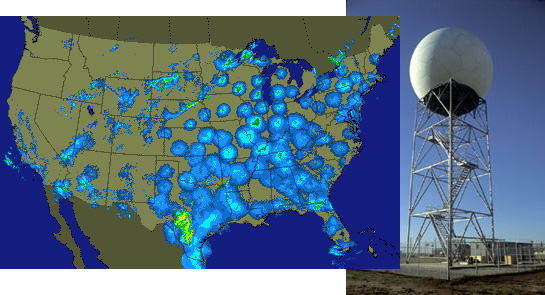

Computers analyze the strength of the returned pulse, time it took to travel to the object and back, and phase, or doppler shift of the pulse.

This reflected signal is then received by the radar during its listening period. Note: it's a small fraction of the emitted energy that is scattered directly back toward the radar. If the energy strikes an object (rain drop, snowflake, hail, bug, bird, etc), the energy is scattered in all directions (blue). The radar emits a burst of energy (green in the animated image). NEXRAD (Next Generation Radar) obtains weather information (precipitation and wind) based upon returned energy.


 0 kommentar(er)
0 kommentar(er)
